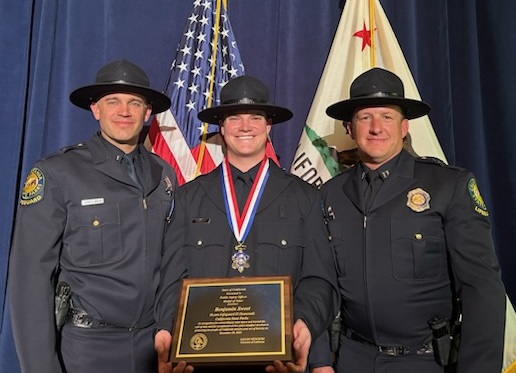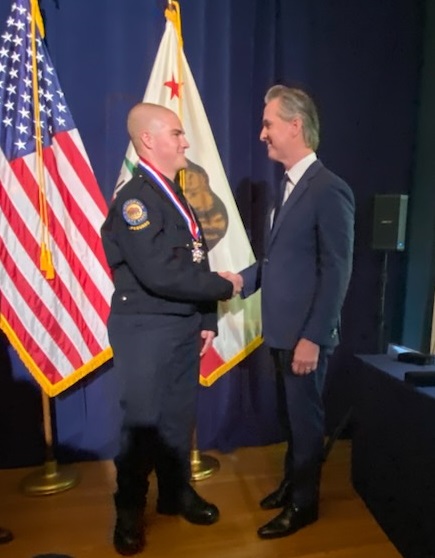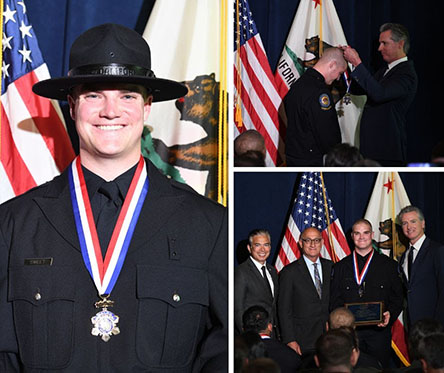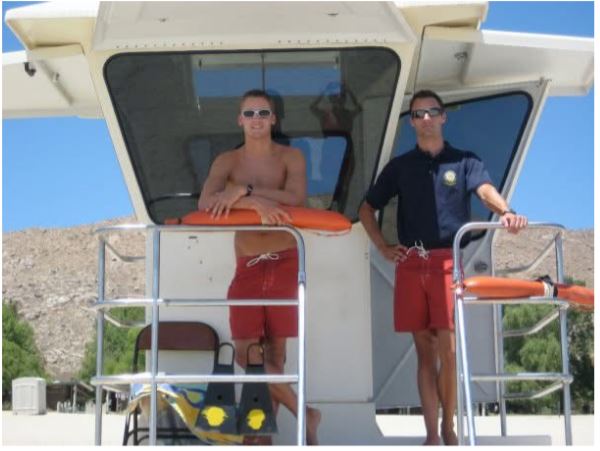HUNTINGTON STATE BEACH
JANUARY 1969
LIFEGUARDS: Eric Emery and Knut Skjonberg
During the "worst storm in over thirty years,” in January, 1969, the Santa Ana River was flowing bank to bank with an accumulation of mud, debris, trees, and even rattlesnakes. Two young men, were sept into the flow. One managed to extricate himself but the other was carried out into the ocean. Lifeguards Skjonberg and Emery responded and swam out into the horrendous conditions as the light of day was fading.
Without wetsuits, the men forged their way through the debris field, navigating around trees and logs in the frigid water, searching for the victim. They eventually reached the youth and were able to tow him to shore. The men were in the water well over an hour.
Due to the extremely polluted water and the cuts and bruises incurred during the rescue, all lifeguards involved had to be medically treated and inoculated against disease.
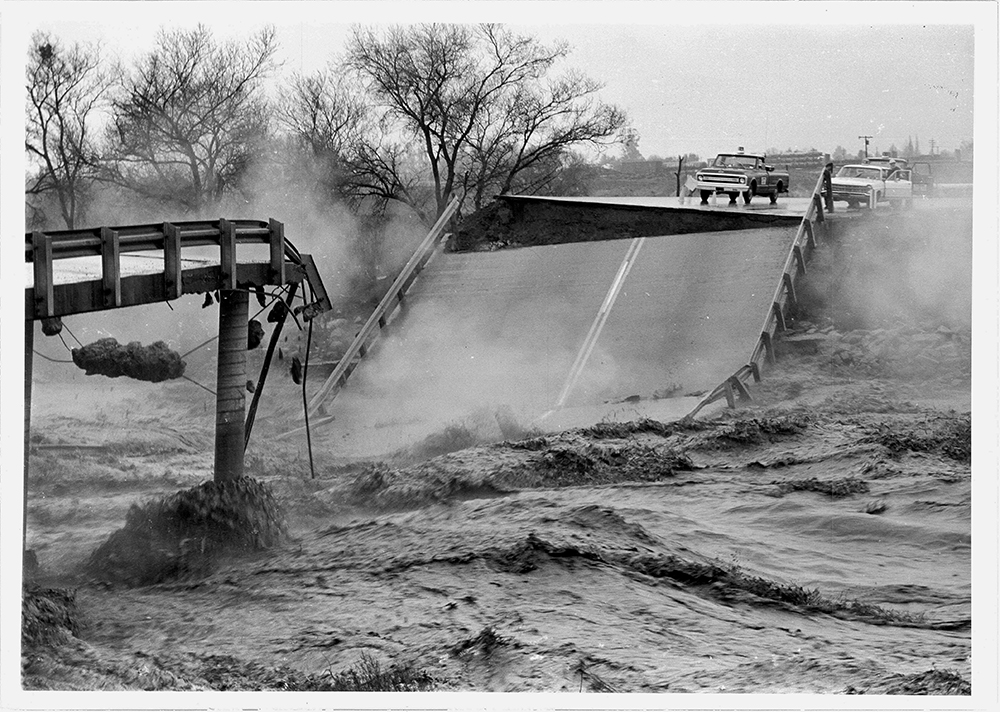
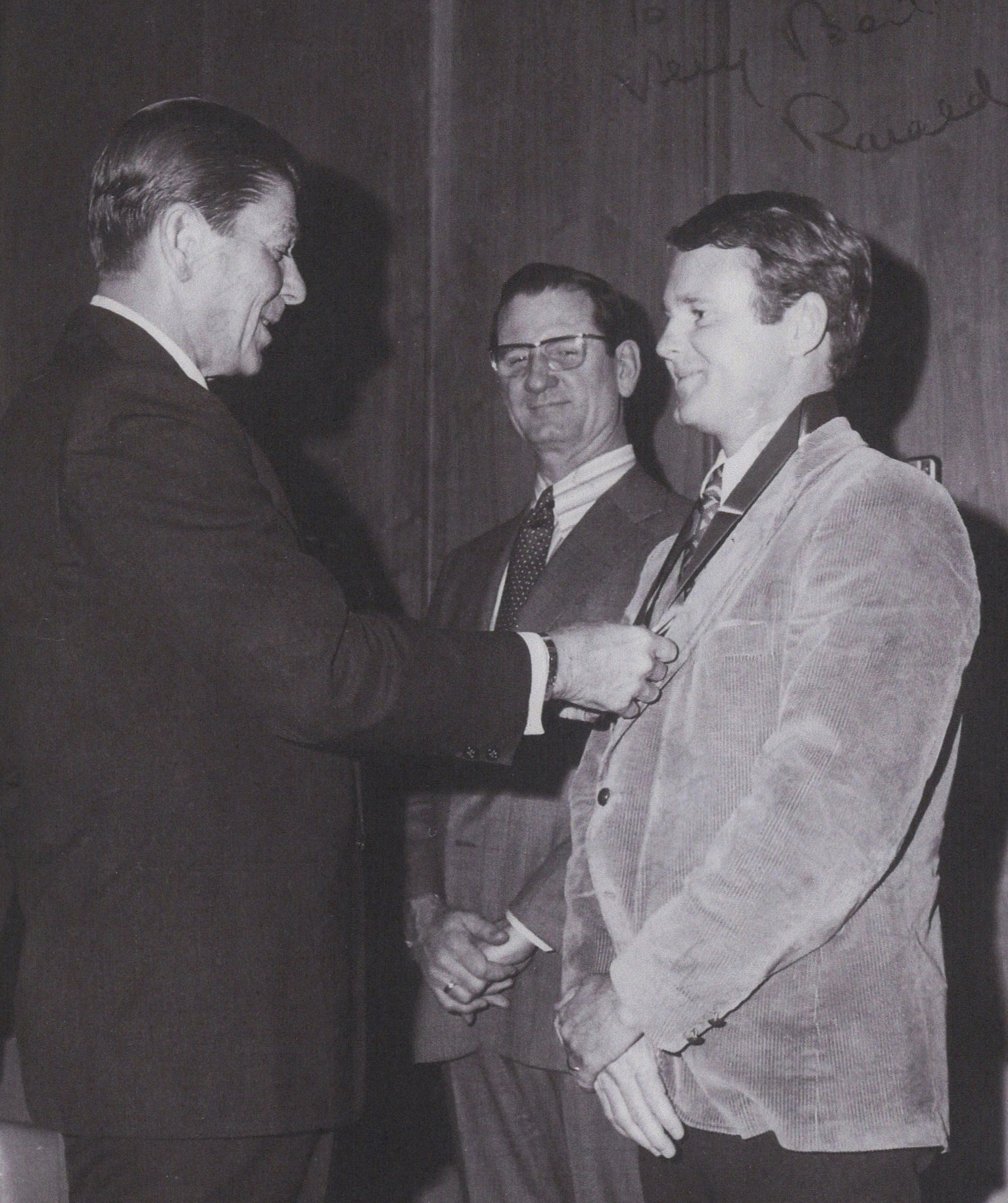
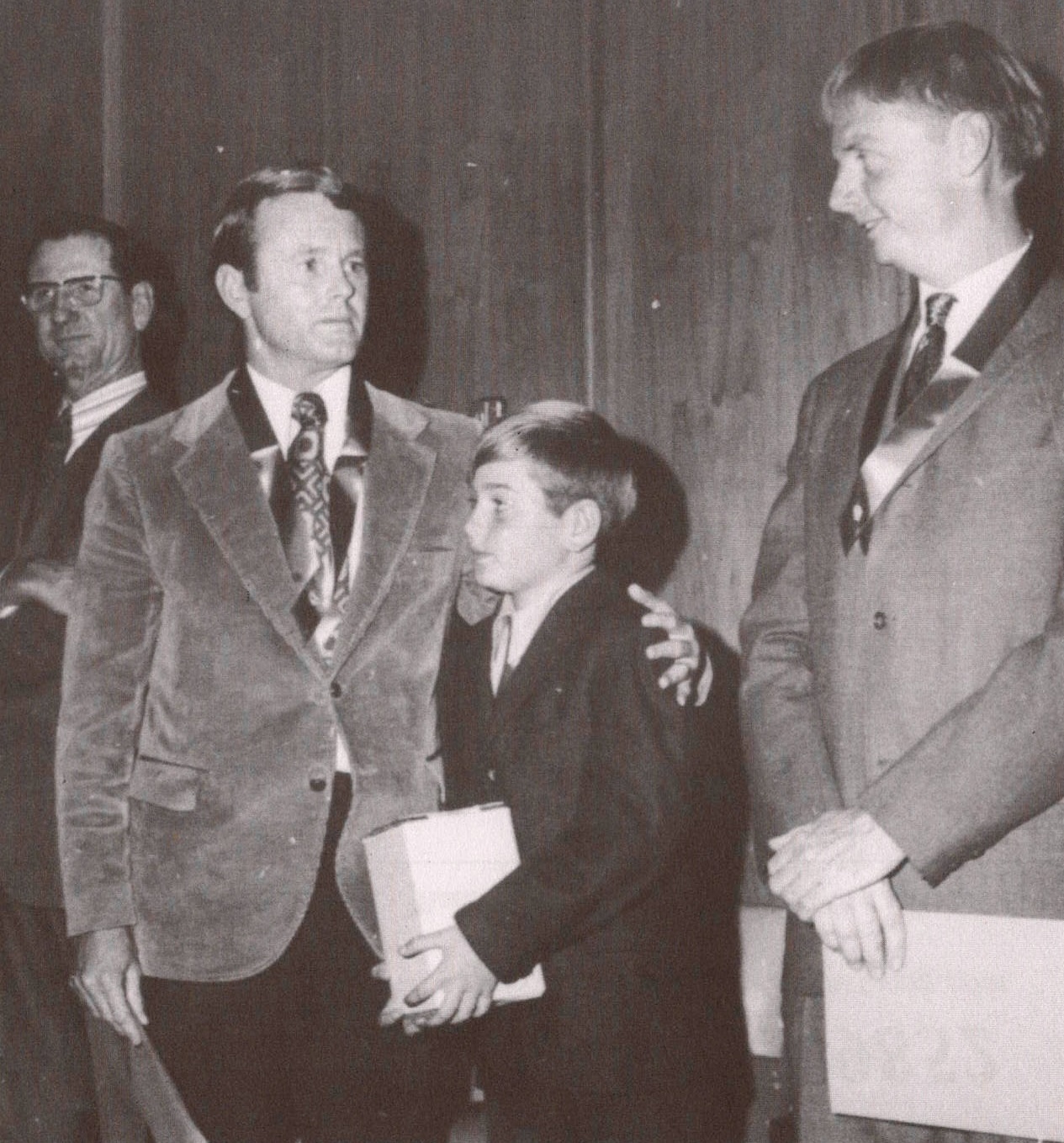
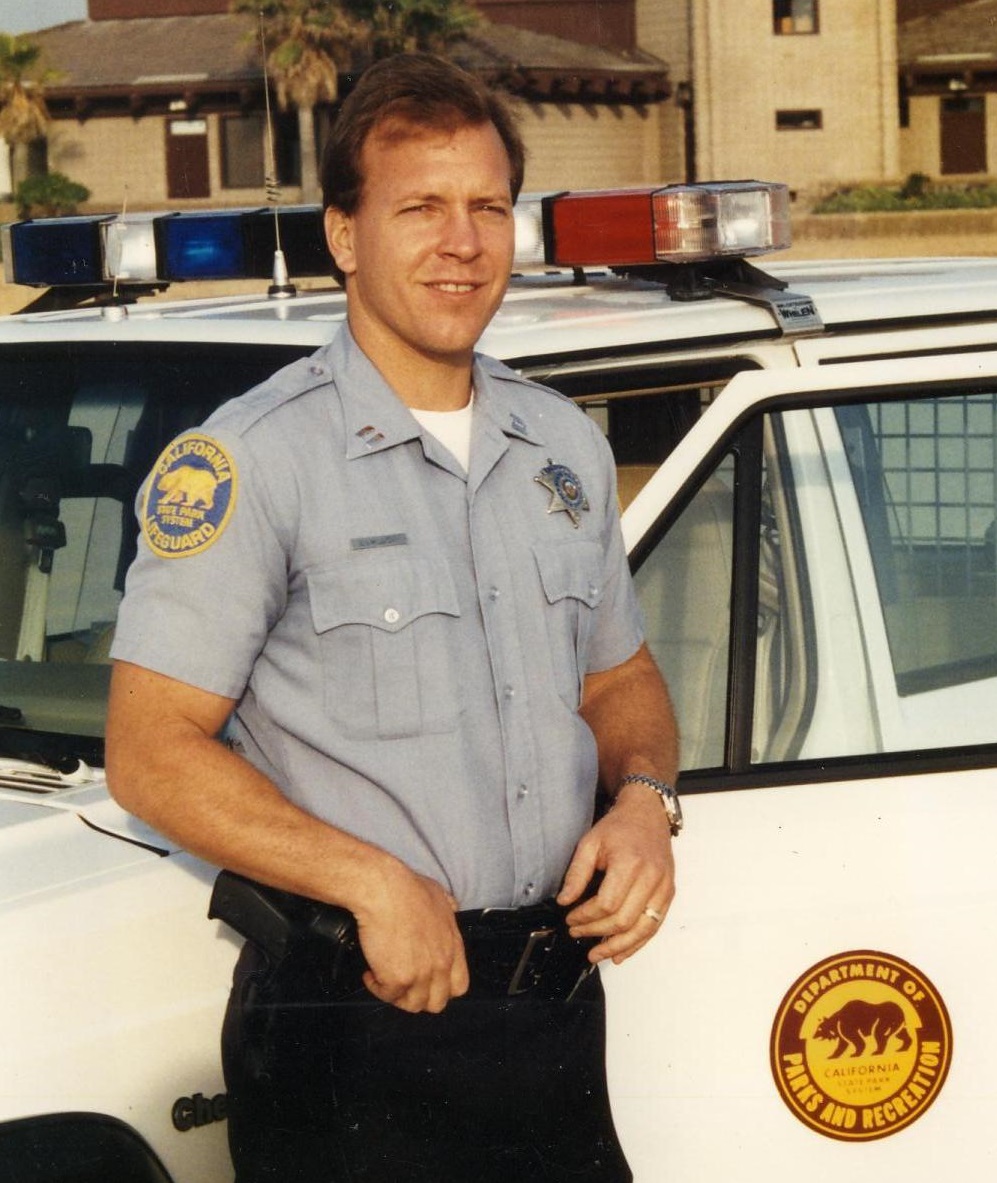
JANUARY 1988
LIFEGUARD: Joe Milligan
On January 17, 1988, three young boys were playing in the Santa Ana River and were trapped on a sandbar. As the river began to rise with storm runoff, the boys held into shrubs to avoid being swept downstream in the power flow which was estimated to be 20 mph.
Joining Huntington City Lifeguards Buerlein and Panis, State Lifeguard Joe Milligan swam a static line out to the victims which was instrumental in retrieving the victims.
SONOMA COAST
WINTER, 1991
LIFEGUARDS: Don Straub and David Carter
While on patrol along the Sonoma Coast on a winter afternoon in 1991, with the swells running 15-feet, the water temp a frigid 49 degrees, and winds howling at 40 knots, Lifeguards Straub and Carter overheard a mayday call to the Coast Guard from the skipper of the 40-foot “La Ola” reported that his vessel was sinking.
The Coast Guard dispatched their 33-foot cutter out of Bodega Bay to intercept the La Ola before she sank. Realizing the skipper was in grave danger, the lifeguards retrieved the only vessel they had — a simple four-meter rubber inflatable equipped with a 30-hp motor. Wearing wetsuits, and armed only with two rescue buoys and their fins, they launched her into those seas with no lights and no communication. Braving 40-knot winds and massive swells, like ocean cowboys, the two guards motored out to sea, scaling waves as large as warehouses.
They came upon the La Ola as the sun was setting. With the Sheriff’s Helo overhead, the guards boarded the boat and Straub went below her deck and reported that the hull was half-full of water and would not make it to Bodega Bay. The winds were blowing far too strong for the helo to pluck the skipper from the vessel, so the guards stood by. If the La Ola went down, it would be the lifeguards alone who would be tasked with rescuing the skipper.
By the time the Coast Guard Cutter arrived, waves were washing over the La Ola’s stern. The cutter was too large to come alongside the sinking vessel in those seas, risking a deadly collision so Straub and Carter jumped into the inflatable, and piloted to the cutter, requesting a portable bilge pump and fuel. Straub then delivered the pump to the La Ola, descended into the dim light of the hull and fired it up. Moments later, water began to flow from the exit hose, but not enough to counter the inflow of water. The guards returned to the cutter and secured a 2nd pump, set it into the La Ola’s hull and, with both pumps working at full throttle, eventually the water level in the hull began to descend. Just after midnight, they motored into Bodega Bay harbor where the La Ola was hoisted out of the water into dry dock.
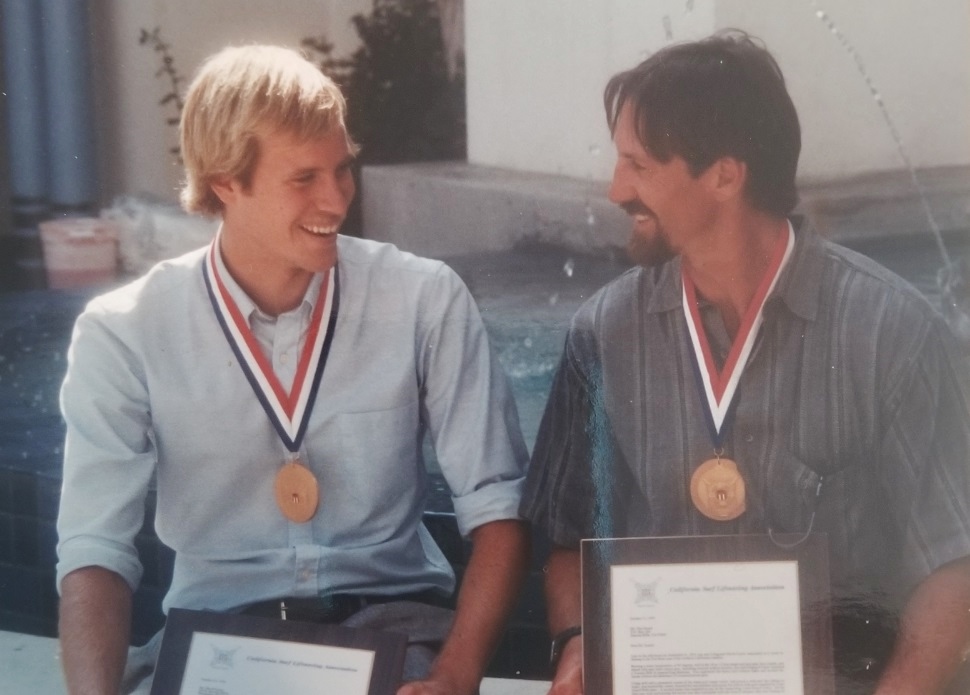
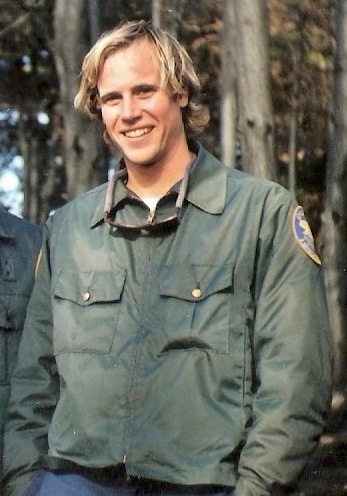
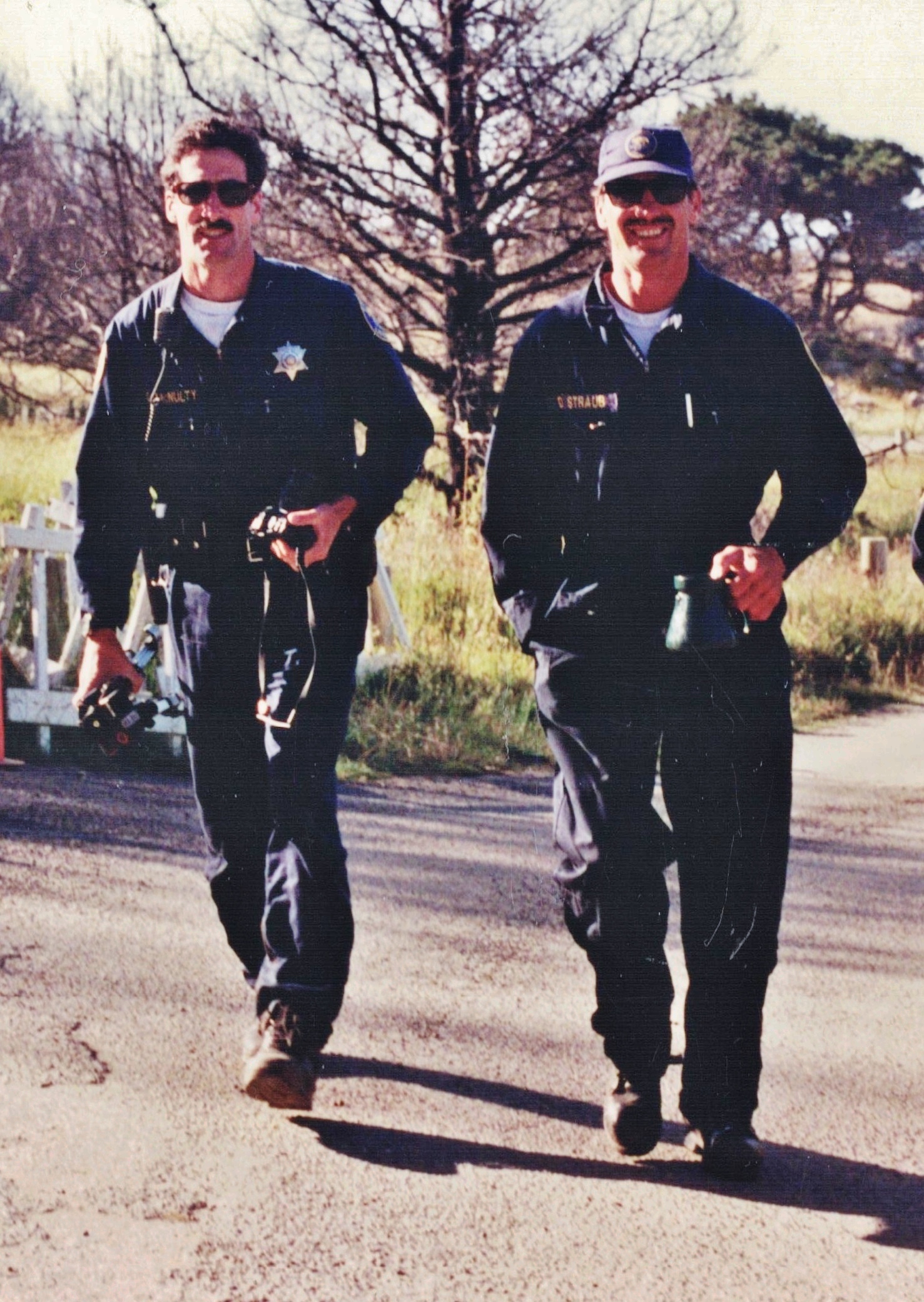
SONOMA COAST
APRIL, 1996
LIFEGUARDS: Tim Murphy and Michael Stephenson
On April 6, 1996, State Park Supervising Ranger Michael Stephenson and State Park Lifeguard Timothy Murphy, both off duty, responded separately to a report of a surfer stranded on a rock and waving for help at Sonoma State Beach. Upon arrival, Ranger Stephenson was able to get a glimpse of the stranded man just before darkness set in. The extremely large surf precluded the use of paddleboards, and the dense fog prevented Coast Guard helo from making the rescue, so it was deemed that they would perform the rescue — old school — swimming out to the victim in the 50 degree water.
Despite total darkness and strong currents, the rescuers were able to get the man safely off the rock. Because the prevailing current was carrying them toward a prominent rock outcropping being pounded by heavy waves, the rescuers, in total darkness, had to tow the man to shore against the current using only a rescue buoy. After forty minutes, they reached the point just seaward of the pounding surf. A light powered by a generator guided them to the general direction of the shore, however just before they re-entered the surfline, the light went out.
All three were picked up and crushed by a twelve foot wave, causing the rescue tube to break. The lifeguards lost contact with the victim for some time until Murphy was able to grab him and bring him to shore.
All told, the rescuers were in the ocean for approximately two and half hours.
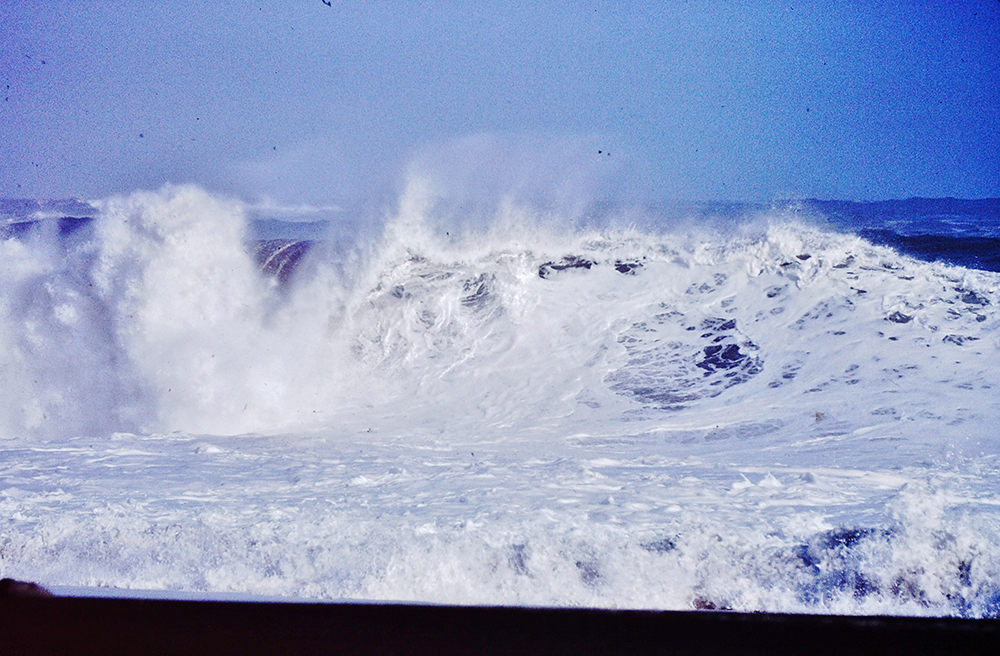
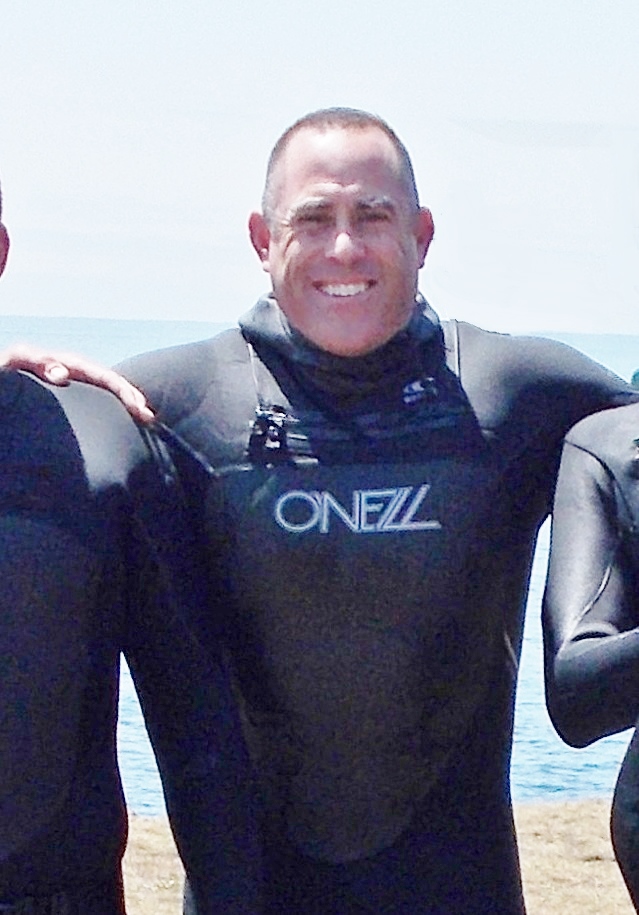
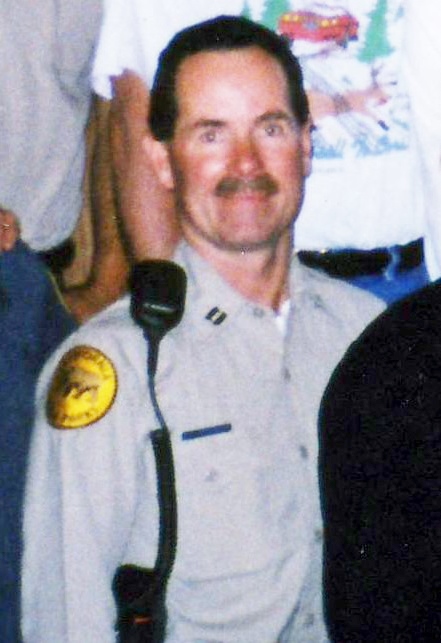
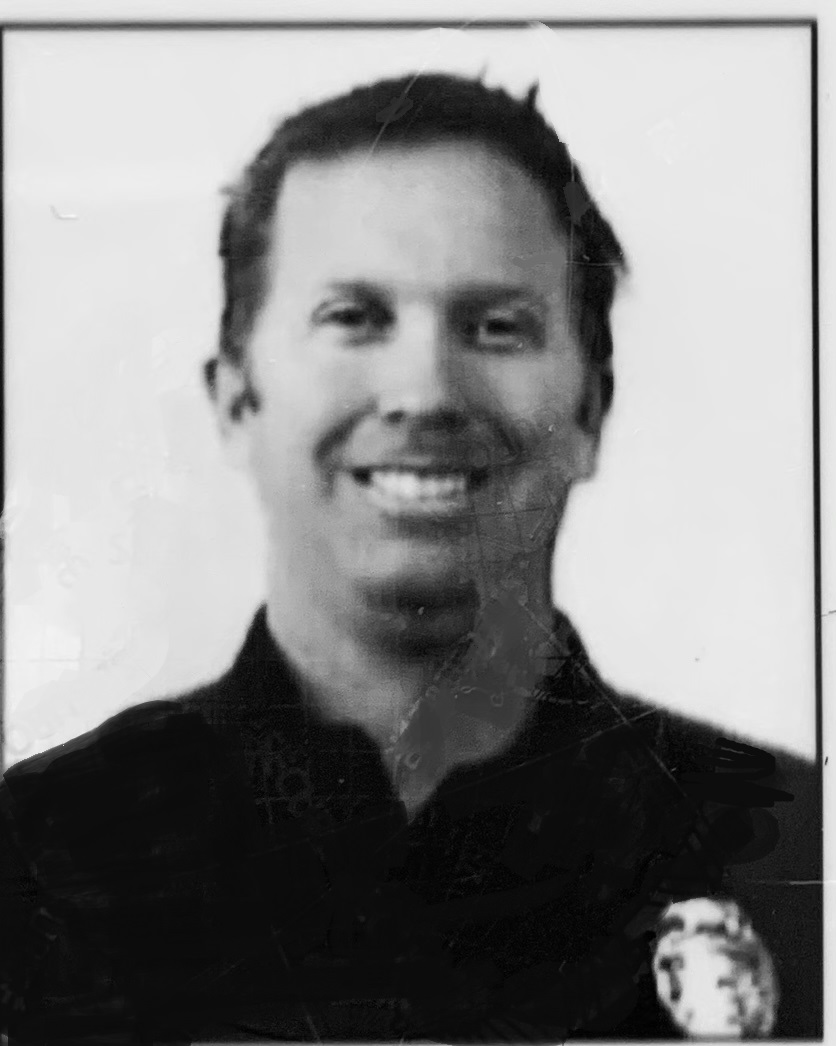 VENTURA STATE BEACH
VENTURA STATE BEACH
MARCH, 1998
LIFEGUARD: Casey Culp
March 15th 1998, with a 4-5’ swell running and the water temperature a bone-chilling 56 degrees, Casey Culp was working in the seasonal lifeguard unit in Ventura when a call came over the scanner reporting three swimmers — a mother and her two children — in distress in Harbor Cove.
He pulled into a chaotic scene. People were running out onto the jetty waving their arms as the victims were scattered in a powerful rip current on the south side of the jetty. Braving the cold water without a wetsuit, he grabbed his buoy and fins, and entered the feeder of the rip.
On his way out, the Harbor Patrol vessel appeared outside piloted by Scott Miller and Paul Korber. It was rare for them to respond to any aquatic emergencies outside the confines of the protected harbor. Stripped down into his swim trunks, with no lifeguard rescue training Paul Korber gallantly dove from the transom and began swimming toward Casey to help.
Casey reached the original victim first, clipped him in and swam him out to the second victim. He then towed both victims northward to reach their mother. With the surf breaking hard on the rocks, and his victims hypothermic, he decided to load the victims onto the Harbor Patrol Vessel. Once safely aboard, they began looking for Korber and Casey spotted him struggling. Culp dove off the transom to rescue him but by the time he reached Korber, the patrolman was unconscious. Culp attempted mouth to mouth in the water, then swam Korber back to the boat where they raced him to the awaiting medics.
Although Culp had saved the lives of the three original victims, Paul Korber was pronounced dead on the scene.
AVILA BEACH
AUGUST, 2003
LIFEGUARD: Richard Griguoli
In August of 2003, a 50 year-old woman was attacked by a Great White Shark while swimming with sea lions in 20 feet of water, approximately 75 yards from shore at Avila Beach.
A group of lifeguards were participating in a completion, approximately 200 yards from the scene of the attack. Despite eye-witness accounts on shore indicating that they had just witnessed a massive shark attack the swimmer, State Parks Seasonal Lifeguard, Richard Griguoli, along with two Avila Beach guards and one guard from Pismo, immediately swam out, directly to the scene of the attack, in an attempt to save the victim.
Although the guards were able to bring the victim to shore, her wounds were fatal and she was pronounced deceased at the scene.
Later reports indicate that the shark was likely between 15-18’.
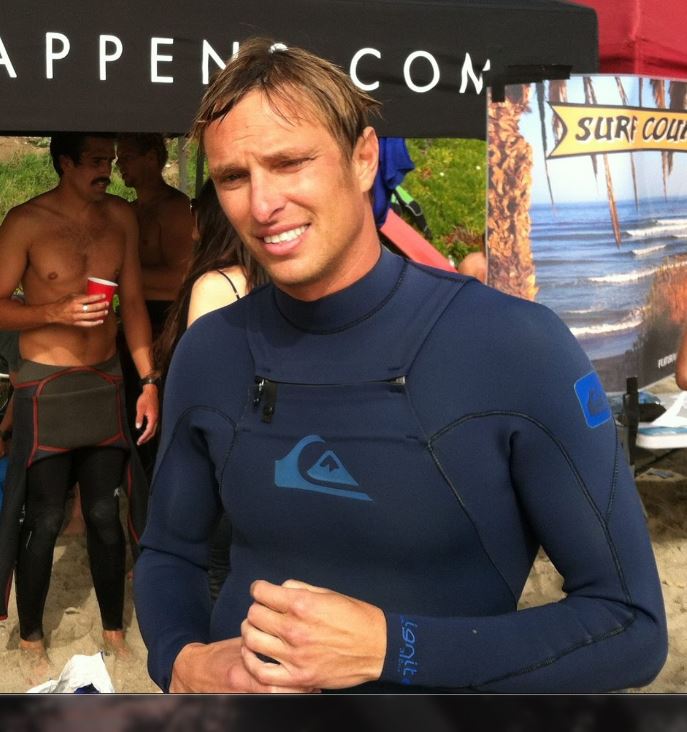
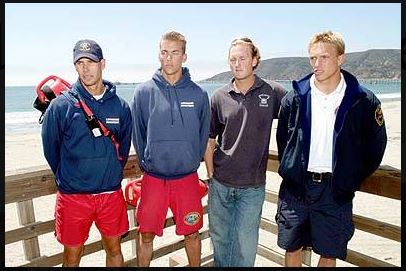
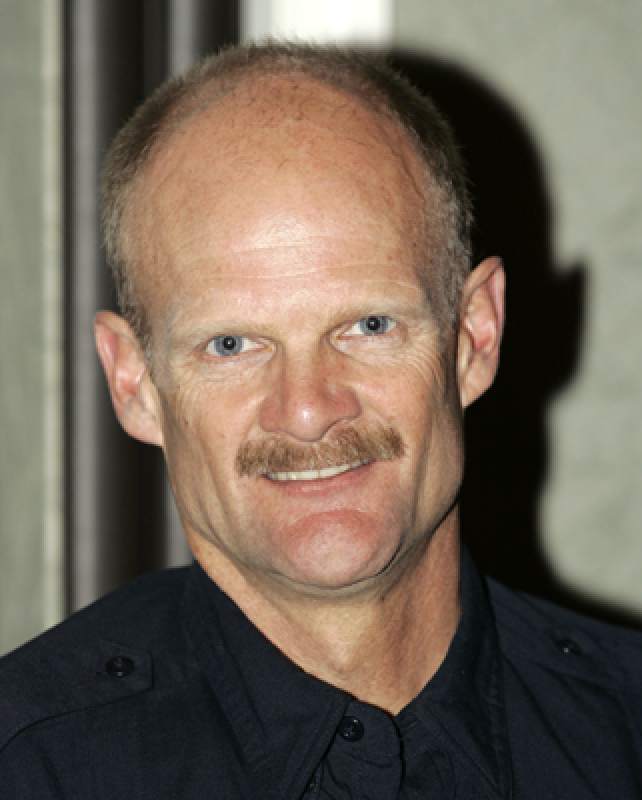 SONOMA COAST
SONOMA COAST
WINTER, 2005
LIFEGUARD: Brit Horn
On a winter day in 2005, Brit Horn was on his way home in his patrol vehicle at the end of his shift on the Sonoma Coast. The coastline was being battered by 14 foot waves. While passing Scotty’s Creek, Horn spotted a young surfer who had entered the ocean and unintentionally got swept out to sea. With the sets continuing to build, the victim was forced to continue paddling farther from shore to avoid the massive close-outs and by the time Horn spotted him, he was already 300 yards from land.
Horn requested a helicopter response, but doubted they would deploy owing to the fading light. When he didn’t get a confirmation, faced with no other option, he decided to paddle out on the 11-foot rescue board. Timing the sets perfectly, he scaled the first set wave, then the second. He pulled up to his knees and accelerated and managed to crest over the outside set of waves.
In the gathering darkness, Horn reached the victim approximately 350 yards from shore. A supervising ranger on shore was able to PA Horn and notified him that the Sheriff’s Helo was enroute. Horn stayed with the victim to keep him calm until he was eventually plucked out by the Sheriff’s Helo and delivered to shore. Horn was given the option of ditching the rescue board and being delivered to shore on the chopper’s line, but instead, chose to paddle in, so he could save the kid’s board.
LAKE PERRIS
SUMMER, 2006
LIFEGUARD: Eric Coats
In the summer of 2006, while on patrol at Lake Perris, Coats witnessed a minivan towing a Sea-Doo trailer, as it rapidly accelerated backward down the boat ramp. The vehicle plunged into the water, rapidly taking on water. The driver, a teenage male, was able to escape the vehicle on his own, but frantic bystanders were yelling that two children were still in the van.
Coats responded to the vehicle, entered through the driver’s side door and was able to extricate both children safely. After handing them off to bystanders, he joined two other lifeguards from the patrol boat, making repeated dives around the vehicle until it was determined that all victims were safely accounted for.
SONOMA COAST
OCTOBER, 2008
LIFEGUARD: Nate Buck
On two separate occasions, Lifeguard and Nate Buck performed actions under extremely dire circumstances that saved lives while placing himself at extreme risk.
On Thursday, October 16 2008, Lifeguard Buck responded to a suicide attempt off of Gleason Beach where a woman drove her vehicle off the cliff, falling 150 feet and landing in the inshore area of the ocean.
With the water temperature around 50 degrees, Buck swam out to the vehicle in 3-4 feet of water. While attempting to extricate her from the wreckage, the victim repeatedly implored Buck to leave her there to die. Over time, Buck was able to remove the victim and swam her to shore.
Nine days later, on October 25, Buck responded to a boat rescue near Ocean Cove. With winds blowing at 30 knots, and surf running a solid 15 feet, a vessel capsized leaving five victims clinging to the hull. Using only a paddleboard, Buck was able to rescue all five individuals and deliver them safely to shore. He subsequently launched the PWC and operated it solo for nearly five hours, warning other boats in the area. Buck was later treated for hypothermia.
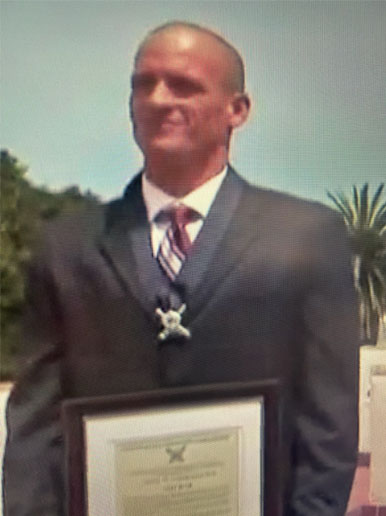
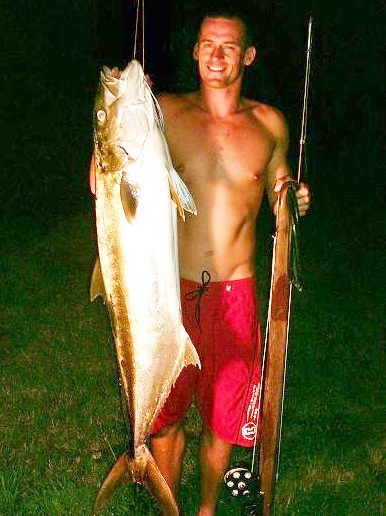
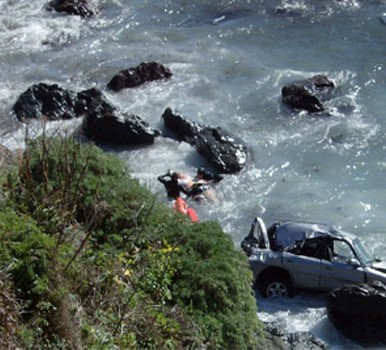
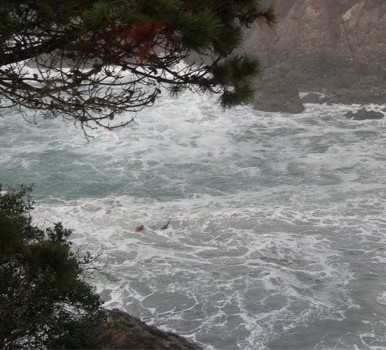
HALF MOON BAY
JUNE, 2009
LIFEGUARDS: James Nothhelfer and Tim Fellars
On June 22, 2009, Lifeguards James Nothhelfer and Tim Fellars, responded to a report of an overturned boat off the Fitzgerald Marine Reserve near Moss Beach. This area is well known for causing boat accidents due to the hazardous, shallow reef. At approximately 1:00 p.m., Officer Nothhelfer arrived on the scene, put his wetsuit on, and began to paddle out toward the victims. Facing nine foot choppy surf that was closely spaced due to the northwest winds that day and floating debris and gasoline caused from the overturned boat, Officer Nothhelfer made his way out through the rocky reef surf zone approximately 300 yards offshore. Six family members, including a six year old boy, had all been tossed into the 54 degree water when their boat overturned. Gathering five of the six family members together on top of his rescue paddleboard, Officer Nothhelfer was able to locate the sixth member who was clinging to the bow of the boat and brought him back to the paddleboard just before the boat sank.
Nothhelfer was able to hold on to all of the family members until Fellars arrived on scene to provide additional help. Despite being hit repeatedly by the surf, together they were able to hold on to the family members until all were transferred to a waiting Patrol boat.
After transport to the harbor, five of the family members were transported by ground ambulances to area hospitals and treated for hypothermia. The six year old boy was transported by medical helicopter to an area hospital for severe hypothermia.
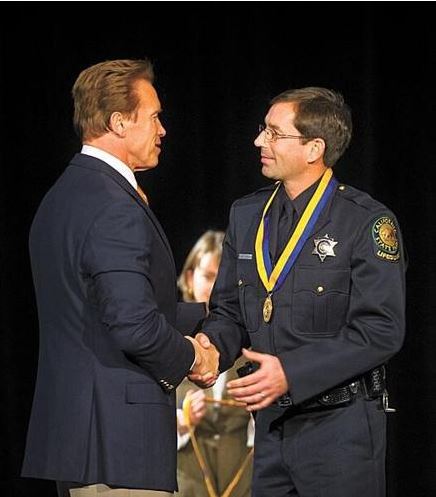
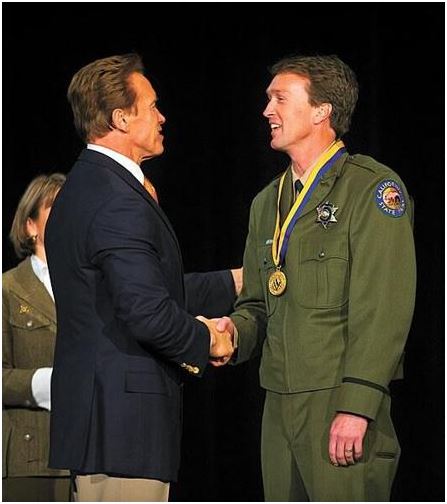
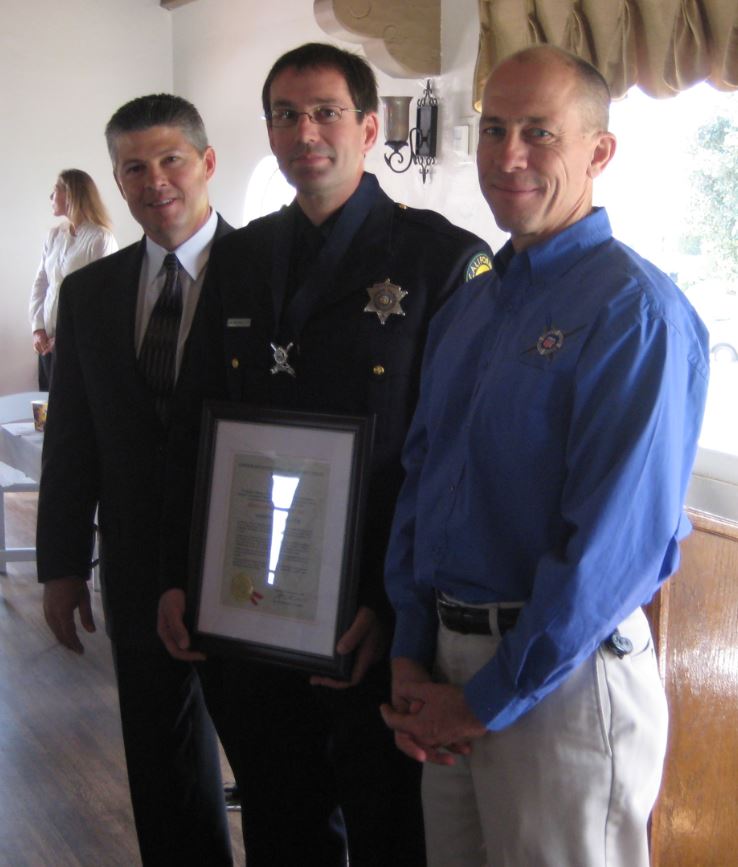
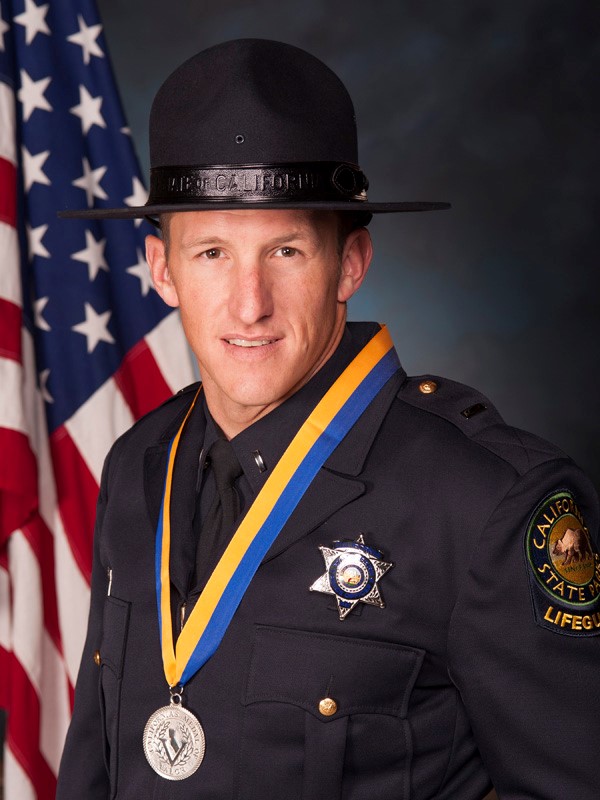 MONTEREY
MONTEREY
OCTOBER, 2010
LIFEGUARD: Justin McHenry
On October 25, 2010, at approximately 3:15 p.m., State Park Peace Officer/Lifeguard Justin S. McHenry responded to a call of two women caught in the heavy surf at Carmel River State Beach.
The two friends had been standing on the beach with their backs to the water when a rogue wave knocked them down and carried them into the sea.
Officer McHenry arrived on the scene, put on his wetsuit, and swam out to her. When he reached the 62 year old woman, she was physically exhausted, having been in the 57 degree water for approximately twenty minutes in street clothes.
McHenry secured her in his rescue tube and swam her out beyond the dangerous breaking waves, then towed her for 15 minutes while searching for a safe exit.
A CAL FIRE Inflatable Rescue Boat arrived and accepted the patient from McHenry. She was transported to a local hospital and treated for extreme hypothermia.
The second victim perished in the heavy surf.
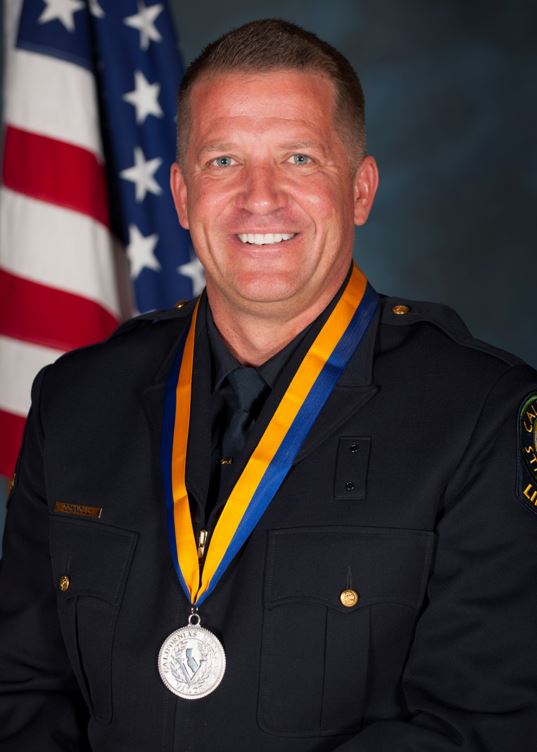
DECEMBER, 2015
LIFEGUARD: Chris Connolly
On December 11, 2015, during the biggest El Niño surf event in years, with 15 to 20 foot waves along a rocky shoreline, California State Parks Lifeguard II Christopher Connolly responded to a call of a surfer in distress at Faria Beach north of the City of Ventura.
Connolly entered the water without hesitation. He swam to the victim, secured him to a life buoy, and then fought wave sets while seeking a safe spot to exit the surf. He then traveled south from the initial rescue point for three-quarters of a mile in a swift current while attempts from other rescuers to reach the pair from shore failed.
He held the victim close for protection and talked the surfer through the ordeal.
Eventually, Lifeguard Connolly was able to reach a sandy beach with the victim was exhausted, but unhurt.
Without the actions of Lifeguard Connolly, the surfer likely would have drowned in the pounding surf. Veteran lifeguards from California State Parks called Connolly’s efforts one of the most demanding and dynamic rescues they had ever witnessed.
SONOMA COAST
FEBRUARY, 2016
LIFEGUARD: Aaron Pendergraft
On February 26, 2016, Aaron Pendergraft was on patrol at Goat Rock Beach. On that winter day, solid 15 foot surf was hammering the shoreline. Pendergraft witnessed a large wave sweep up the berm and knock down a family of five. Initially, all five were in the water, but three of them were pulled to shore with the help of bystanders. The other two (a mother and daughter) were pulled into the deep inshore hole. Working on instinct, Pendergraft sprinted from the vehicle without wetsuit, fins, or even a Rescue Buoy and dove into the 49 degree water.
He reached the child first and managed to pull her to the mother. The pounding surf was too big and dangerous to bring them back into the surfline, as was the impact zone, so he pulled them offshore and waited for responding units to summon the Sheriff’s Helicopter.
The helo set up a pickoff rig and extricated the child on the first attempt, the mother on the second attempt, and Pendergraft on the third. In all, Pendergraft was in the 49 degree water for 30 minutes with no wetsuit. Pendergraft was transported to Sutter hospital where he was treated for hypothermia.
As an addendum, when the ER physician discovered the nature of the rescue, he asked if he could bring in his son to meet the real Lifeguard hero.
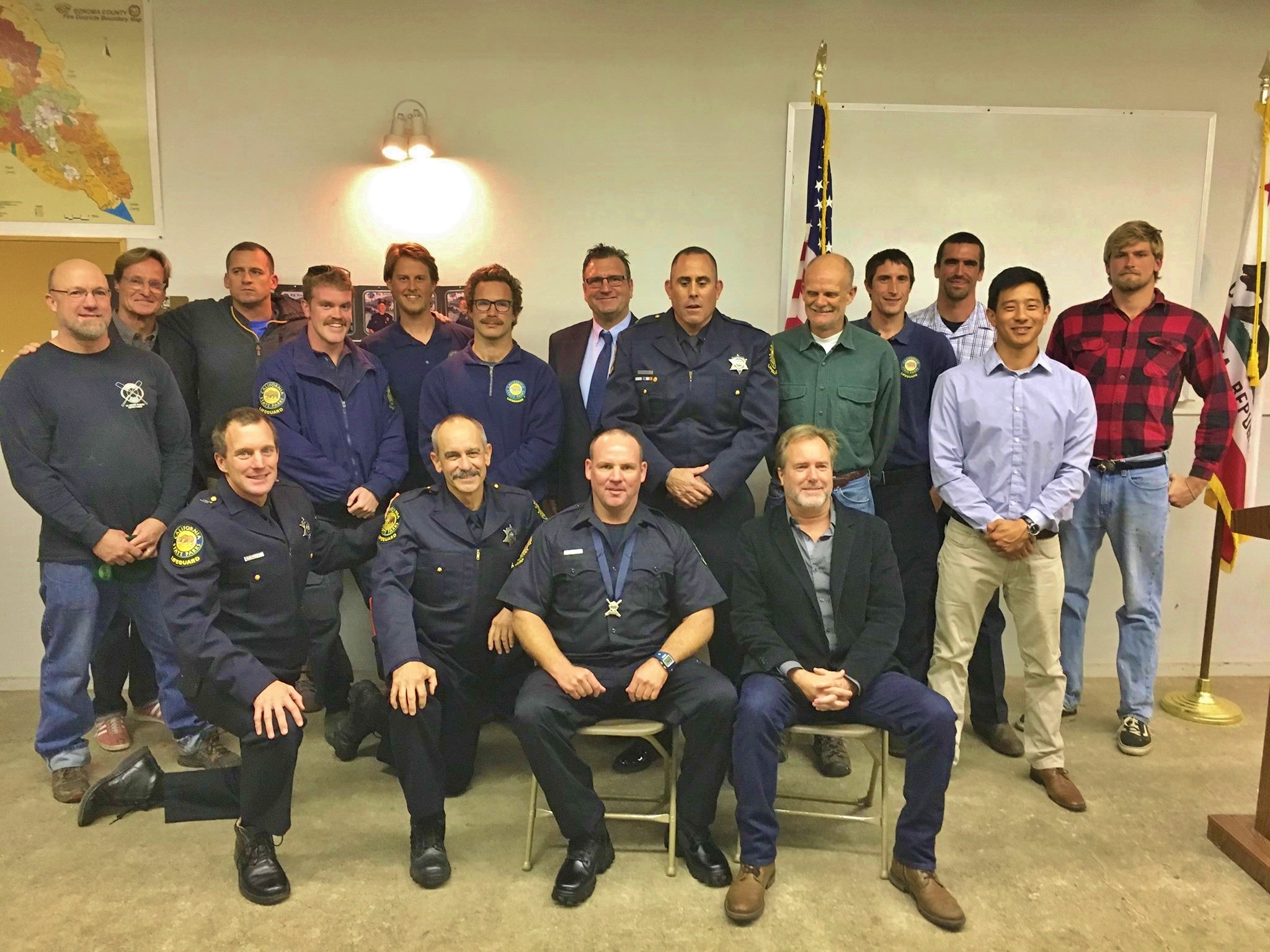
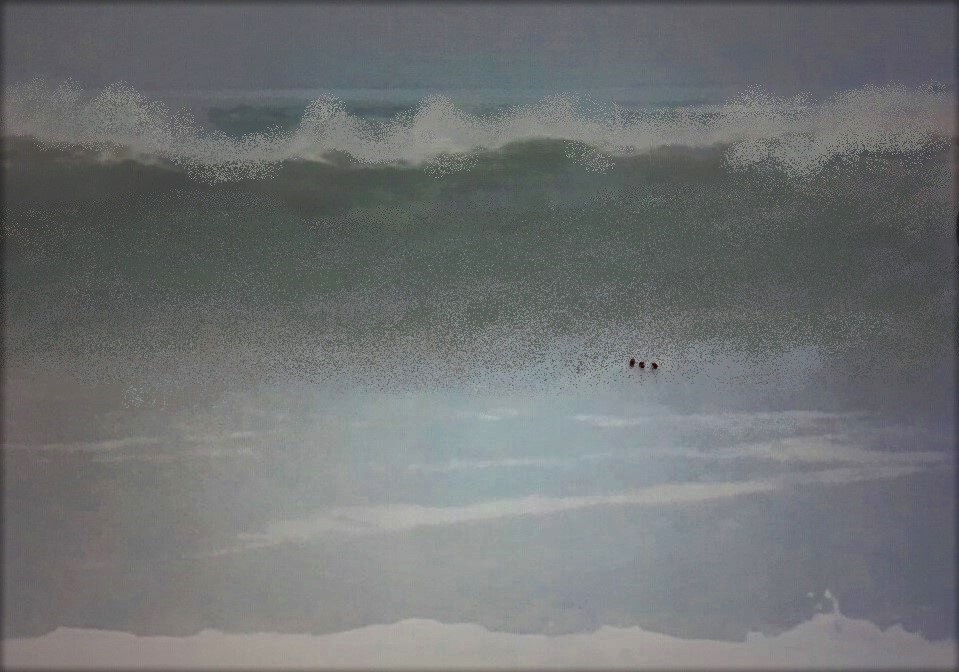
OCEANSIDE
SUMMER, 2016
LIFEGUARD: David Wilson
In the summer of 2016, while working for the Oceanside Lifeguards, Wilson responded to a 911 call on the Oceanside jetty. A 270-pound gentleman with no boating experience had crashed his rental Jet Ski into the riprap with such force, his body became wedged between the rocks. Wilson was the first rescuer on scene. Discovering the victim was incoherent, he positioned himself beside the patient, shielding him from the 4’ waves while cradling the man’s head to protect it from being beaten against the rocks and maintaining the victim’s airway. Wilson himself was left vulnerable to the abuse from the waves, which battered him against the rocks. Between waves, Wilson tried frantically to pull the man’s legs free from the riprap, but they were hopelessly pinned. Eventually, a Harbor Patrol Officer, dove from the patrol boat and swam over to assist Wilson, as did a Sergeant with the Oceanside Fire Department. While enduring injury to themselves, the three men were eventually able extricate the victim from the rip rap and he was flown off for definitive care.
Coincidentally, Wilson’s father was riding his bike in Oceanside when he saw the helicopter landing near the jetty and saw dozens of rescue personnel involved in the major call. When he rode closer, he recognized his son in the midst of the rescuers, lifting the unconscious victim from an obviously perilous situation.
Despite his own injuries, Wilson returned to the beach to find all of the lifeguards were in the water making multiple rescues. He immediately joined in the fray and proceeded to make a dozen more rescues on what was deemed “a banner day of lifeguarding.”
The following year, Wilson was hired by the State Lifeguards
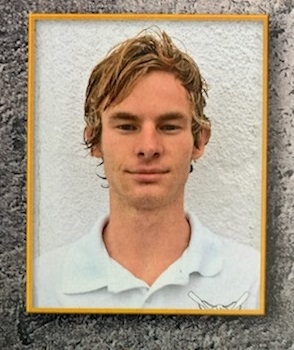
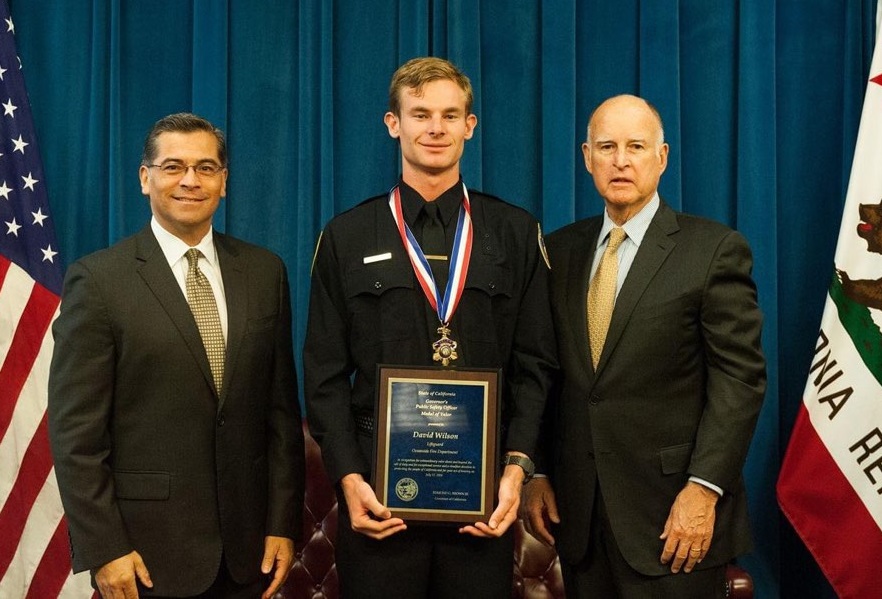
MENDOCINO COAST
WINTER, 2018
LIFEGUARD: Ean Miller
On the evening of December 15, 2018, State Parks Lifeguard Ean Miller was on duty near Pudding Creek Beach in Fort Bragg when he heard a report of two kayakers in distress near the town of Westport.
Miller responded to the scene through rain and darkness and found one victim onshore suffering from hypothermia. The second victim was still in the water about 75 yards offshore.
Lifeguard Miller entered the surging surf alone and in the dark, contending with powerful swells, 15-knot winds, exposed rocks and breaking surf.
Using his helmet flashlight, buoy, fins and rescue board, he made his way out and found the victim, lying face down in the water. Miller brought her to shore and initiated CPR until the victim was handed off to paramedics who transferred her to Santa Rosa General.
The victim made a full recovery.
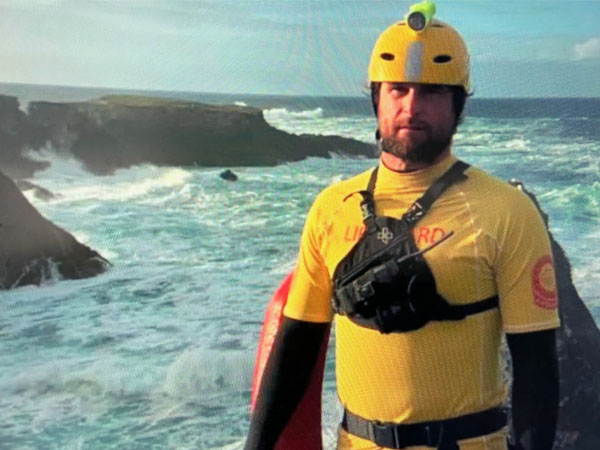
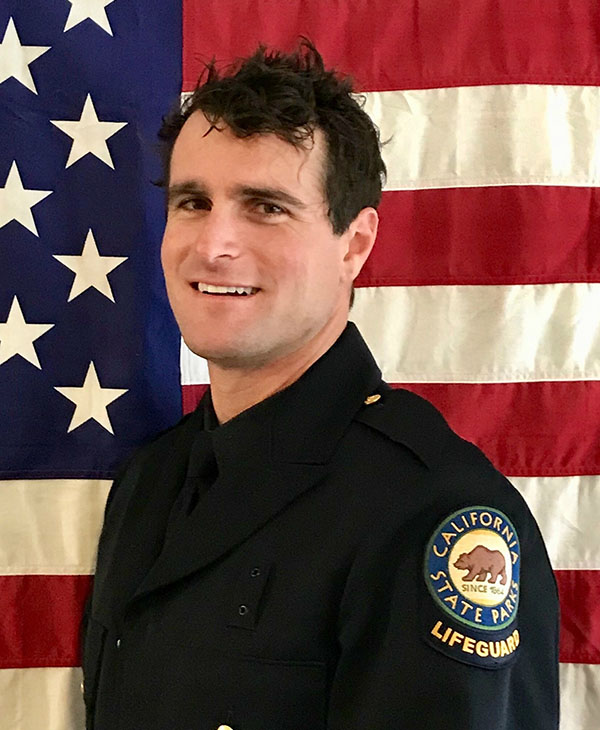
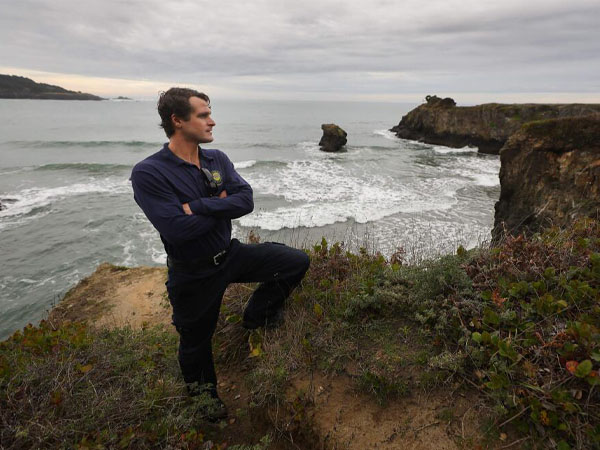
SAN DIEGO COAST
SEPTEMBER, 2018
LIFEGUARD: Andrew Helble
On September 29, 2018, State Park Peace Officer Andrew Helble was off duty and diving for lobster on opening day of the season at Beacon’s Beach with his brother-in-law and a friend.
Hearing someone yelling, “I got bit! I got bit!” they spotted a 13-year-old boy who had also been diving, approximately 80 yards away and about 100 yards from shore.
Helble swam to the victim, and observed major traumatic injuries on his face, neck, shoulder and back — consistent with a shark attack. He assisted the bloodied teen onto a kayak and stabilized the injured diver while his friend paddled the craft through the surf line to shore.
Multiple witnesses reported that the shark — thought to be a 10- to 12-foot Great White — trailed the group as they made their way toward shore.
The rescuers reached the beach where Helble, an EMT, used his training to stop the life-threatening bleeding along with an Encinitas guard.
Helble also assisted with scene management and landing a medical transport helicopter.
The victim’s wounds ultimately required over a thousand sutures, but he survived.
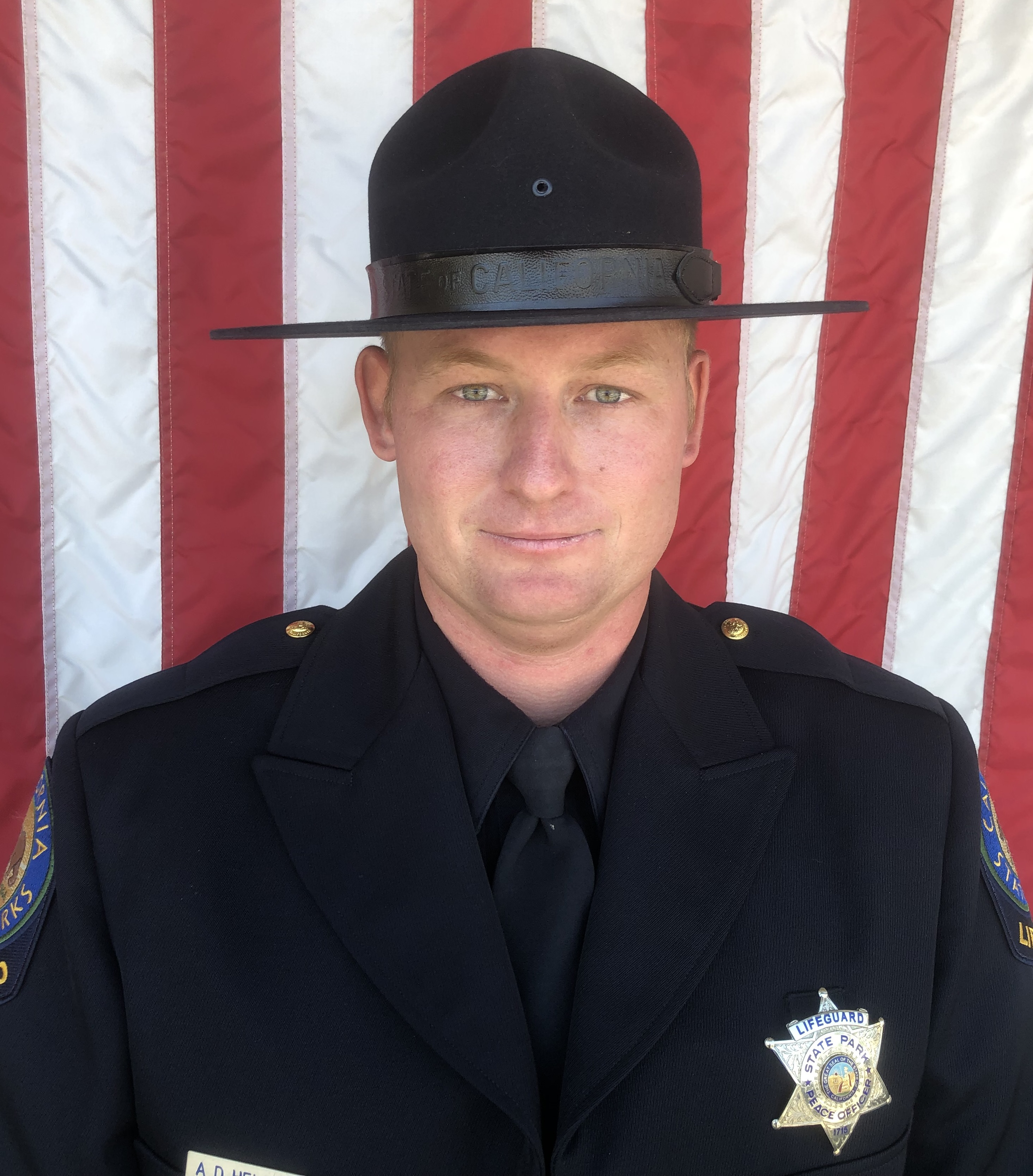
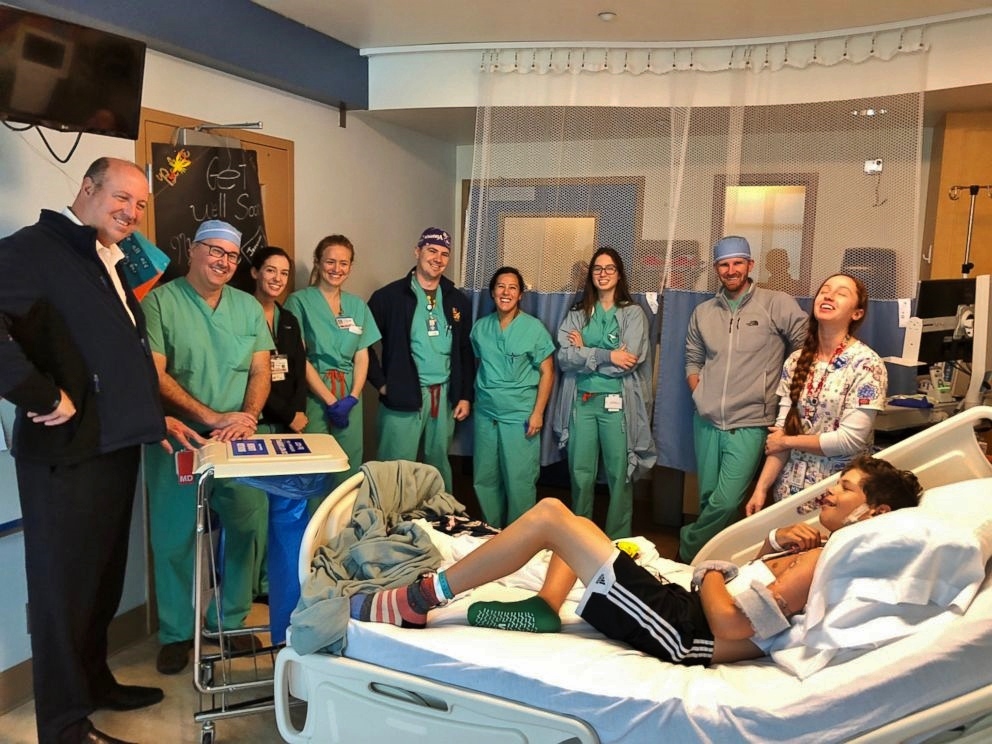
MONTEREY
WINTER, 2020
LIFEGUARDS: Erin Kothlow and Megan Brady
On December 26, 2020, Lifeguard Erin Kothlow and Megan Brady responded to a call 60 miles away, at Limekiln State Park in Big Sur. Two fishermen were taken out to sea after being separated from their kayaks. The surf was breaking 10-15 feet with an extreme shore break, and the men were at least one-third of a mile from shore. The two men had been in the water for over an hour-and-a-half, and they were now suffering from hypothermia and having difficulty remaining on the surface.
Lifeguards Megan Brady and Erin Kothlow entered the water through the 15-foot surf, and after a monumental effort, and at great risk to their own lives, they were able to pull the victims out of the water. Following their rescue, the rescued victims were treated on shore and survived the ordeal.
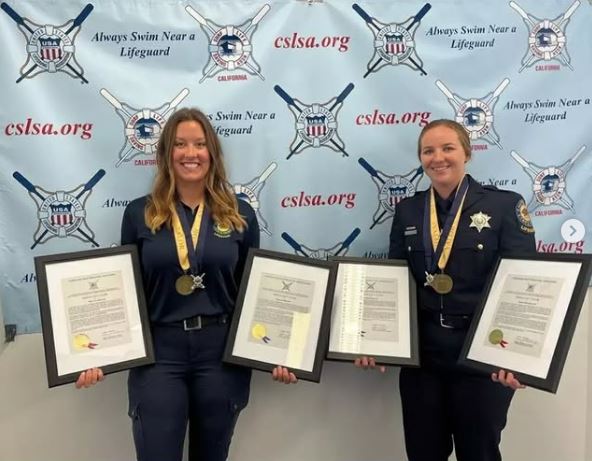
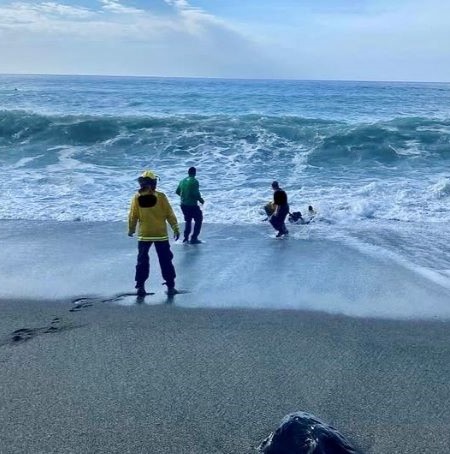
HALF MOON BAY
WINTER, 2023
LIFEGUARDS: Max Hunter and Riley Rhodes
On the evening of Saturday, January 21, 2023, lifeguards Max Hunter and Riley Rhodes were 10 minutes away from clocking out for the day when they received reports of a lost swimmer off Poplar Beach in Half Moon Bay. With a minus tide in full effect, the lifeguards quickly arrived on the scene and from a cliff were able to catch a glimpse of the distressed individual about 300 yards out. Donned with their wetsuits, fins and rescue buoys, the lifeguards entered the water as the light was quickly fading. For the next 20 minutes, they swam through large swells more than 8 feet high and navigated shallow sandbars, deep holes and unrelenting surf to reach the spot where they hoped they would find the victim. But as they cleared the breaking waves, they realized they had lost sight of the swimmer over the swell lines. Ensuring they stayed together, the lifeguards began to urgently call out and heard the man screaming for help moments later. Guided by the victim’s cries, they finally reached him, roughly 500 yards from shore. Pummeled by waves, the lifeguards provided the victim with a floatation device. Due to the extremely hazardous conditions and darkness, the units on shore had lost sight of all parties and repeatedly attempted to call the lifeguards back. Believing that the local harbor patrol had seen them, the lifeguards tried to swim the victim to the patrol vessel since they were much closer to the boat than the beach. However, after towing for several minutes, they realized that the patrol boat had not seen them, and the vessel was moving away. During this time, a U.S. Coast Guard helicopter arrived overhead and immediately began flying a search pattern to find them with no success. Lifeguards Hunter and Rhodes ultimately decided they had to swim to shore, towing the victim in a rescue buoy in complete darkness, while navigating the increasingly dangerous conditions. After being in the water for nearly an hour while navigating large winter surfs and rip currents, the two eventually towed the exhausted survivor ashore near Redondo Beach, almost a mile from where they had first entered the water. For the other first responders on the beach, seeing the lifeguards emerge with the rescued individual was truly wondrous. The State of California takes great pride in presenting the Gold Medal of Valor to California Department of Parks and Recreation, Lifeguard I Max Hunter and Riley Rhodes, for their extraordinary heroism extending far above and beyond the normal call of duty.
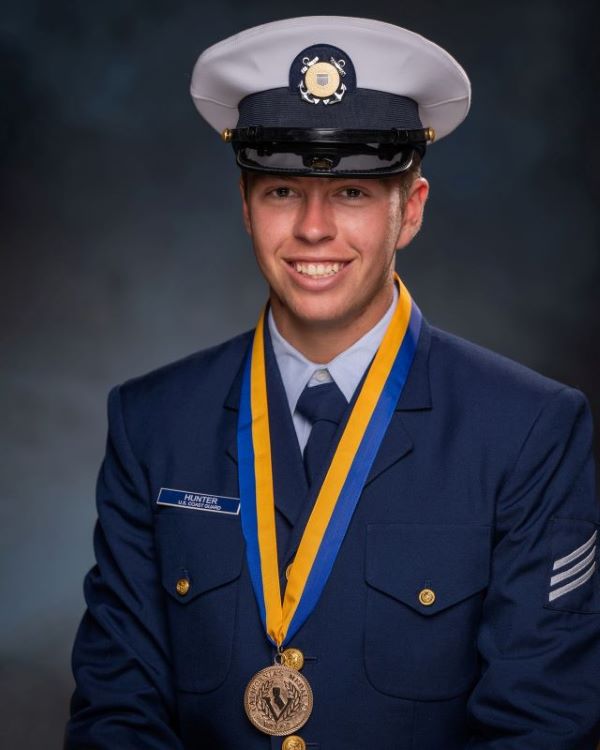
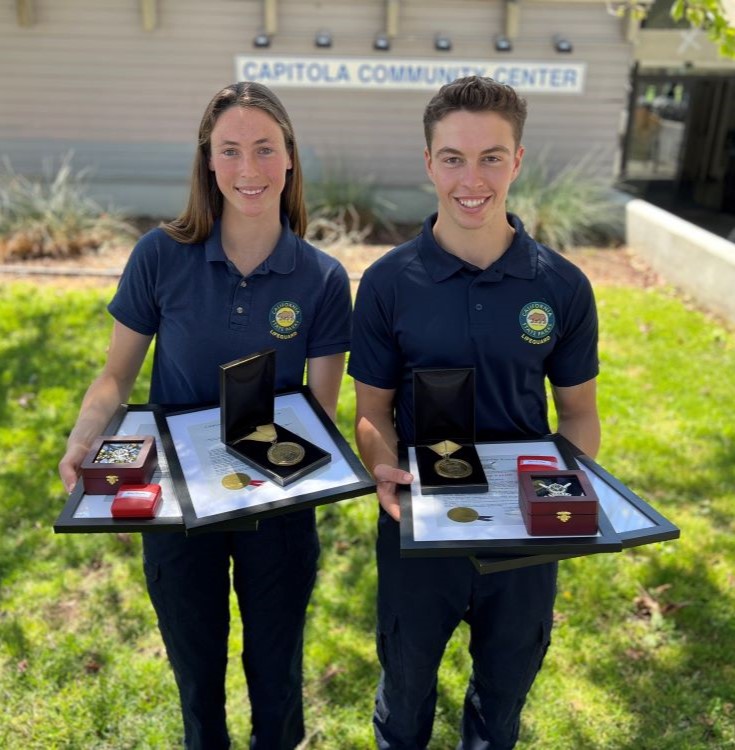

VENTURA STATE BEACH
WINTER, 2023
LIFEGUARD: Ben Sweet
On December 28, 2023, the National Weather Service issued an extreme High Surf and Flooding Advisory for the Ventura County area. Due to the extreme conditions, the United States Coast Guard requested all beach portions of the California State Parks within Ventura County to be closed to the public.
The Ventura City Pier was also closed to the public due to the large surf and failing structural integrity of the pier. Lifeguards patrolling the beaches observed a surfer in distress. He was separated from his surfboard about 400 yards offshore. Due to the extreme surf size and extensive debris in the water, lifeguards found it difficult to maintain visual contact with the victim. Ben Sweet notified personnel on the beach he was going on the pier to get a better visual of the victim. At the end of the pier, Ben observed a male victim struggling in severe distress and calling for help. The victim was moving very quickly with the fast-moving lateral current with accompanying large 15-20 foot waves.
Ben decided to effect the rescue. He jumped from the pier into and extremely dangerous debris field and large surf. Ben eventually made contact with the victim after swimming nearly a half-mile and secured him in his rescue tube. As Ben began swimming the victim back to shore, they were struck by multiple large waves, which caused them to be separated. Ben performed a "hasty search" but was unable to locate the victim. The victim was found to have washed ashore, still secured in the rescue tube a mile down the beach, ultimately surviving this horrific incident.
